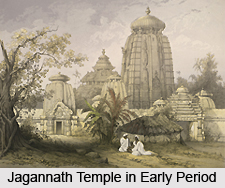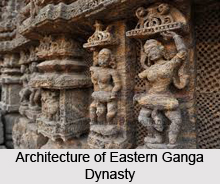 Lord Jagannath is eternal. Regarding the origins of the lord there are two versions one is based on the Puranas and other is based on the folklore. The history of the temple dates back to the 12th century A.D. The temple was built by Chodagangadeva of the Ganga Dynasty. In fact it is better said that the construction of the temple was began by King Chodagangadeva and it was finished by King Anangabhima Deva.
Lord Jagannath is eternal. Regarding the origins of the lord there are two versions one is based on the Puranas and other is based on the folklore. The history of the temple dates back to the 12th century A.D. The temple was built by Chodagangadeva of the Ganga Dynasty. In fact it is better said that the construction of the temple was began by King Chodagangadeva and it was finished by King Anangabhima Deva.
A peep into the pages of History reveals that the temple existed on the soils of Orissa since the ancient times. Sometimes the temple was patronised by the ruling dynasties of Orissa and at other times it was neglected to a large extent. From the times of the Ganga Dynasty in Orissa the temple received full patronage from the rulers because the rulers of the Ganga dynasty believed that Lord Jagannath was the actual ruler and the king was his deputy.
In the 16th century the Jagannath Temple of Puri was plundered by the Afghans. During the attack of Afghans it was the priests of the temple who had saved the deity by keeping it in seclusion.
 Besides the Afghans several times the Muslims had also attacked the temple and every time the worship of the temple had stopped but soon it were restored. History says that once Orissa had come under the Maratha rulers but at that time the worship of the temple had not stopped.
Besides the Afghans several times the Muslims had also attacked the temple and every time the worship of the temple had stopped but soon it were restored. History says that once Orissa had come under the Maratha rulers but at that time the worship of the temple had not stopped.
Initial acrimony and ignorance of the Muslims witnessed several attempts of desecration of the Jagannath Temple during the early period of Muslim reign. Tradition has it that Kabir visited Puri and was enamoured by the Triad. He set up a monastery in Puri known by the name of Kabir- Chaura. Till date, Hindus and Muslims visiting Puri go there first and together eat food and drink (Torani). Similar is the tradition of "Guru Ka Langar" at Bauli and Mangu monasteries set up to commemorate Guru Nanak`s visit to Puri. Adi Sankaracharya visited Puri and set up his monastery (Govardhan Math) under his disciple Padma padacarya savants.
The coming of the British to India had brought the temple management under stress but it should be mentioned that the British never stopped the Hindus from worshipping Lord Jagannath. Thus it can be said that even the colonial rulers in India gave indirect patronage to the Jagannath temple of Puri.
Thus it is evident that in spite of all attempts to mutilate the temple of Jagannath till date the temple stands as a major attraction for the Hindus.





















